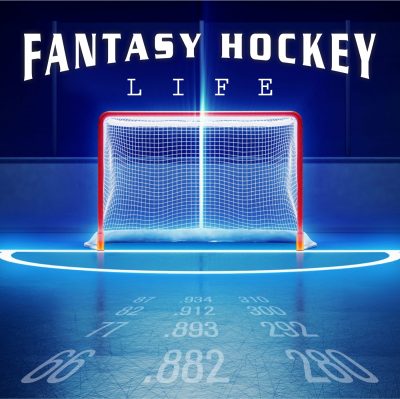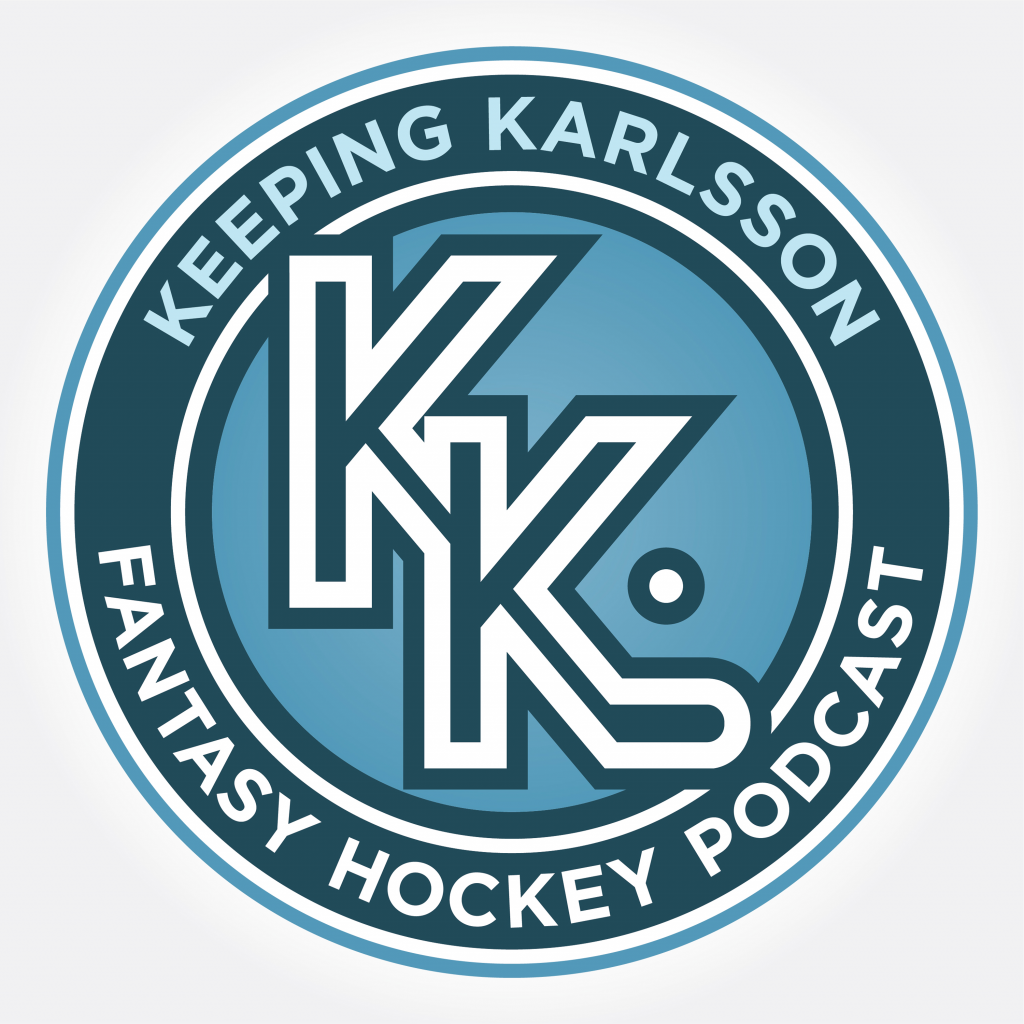Welcome back to Forum Buzz, where I peruse the DobberHockey Forums and weigh in on active, heavily debated, or otherwise relevant recent threads, reminding folks just how great a resource the Forums are. Nearly anything might be covered here, other than trades and signings, which usually get their own separate write-ups on the main site and are also normally covered in the next day’s Ramblings, or questions that are specific to salary cap issues, which is the domain of the weekly Capped column. To access the specific forum thread on which a question is based, click on the “Topic” for that question.
As is now becoming tradition, I'll start the column with a nod to the "Who am I?" thread in the Forums where someone thinks of a real-life hockey player or persona, who can be from the past or present, male or female, in the NHL or not, and they give clues to help people guess who it is. You get to enter one guess per clue, and if you guess correctly you think of the next player, so it just keeps going indefinitely. For your enjoyment, here is a "Who am I?" sample. See how many clues it takes for you to guess who I am.
CLUE #1 – I'm a Canadian defenseman
CLUE #2 – I was a first round draft pick
CLUE #3 – I made my NHL debut the year I was drafted
CLUE #4 – But I was not an instant success, as I spent my entire age 19 season in the AHL
CLUE #5 – I also did good but not great with my first team, never hitting the 50-point mark
CLUE #6 – On my second team, I thrived in terms of scoring and popularity among all NHL fans
CLUE #7 – I've played several seasons on a third team, but my scoring rate keeps dropping
CLUE #8 – In fact, 2024-25 marked my first season with less than point per every other game scoring in over a decade
CLUE #9 – I've only played for American teams
CLUE #10 – None of the teams I've played for, in their current incarnations, existed 30 years ago
CLUE #11 –Even accounting for age, I look vastly different than I did when I was drafted
CLUE #12 – I was drafted as a forward
CLUE #13 – I've won a Norris Trophy
CLUE #14 – My initials are B.B.
So, who am I? Hopefully you figured it out. Check the end of the column to confirm, or, if not, to find out who I am. Now onto regularly scheduled Forum Buzz programming.
Topic #1 – In a weekly H2H league starting 2C, 3W,1 forward only flex, 4D, 1G, and one flex at any position, with skater of G(4), A(3), SOG(1), PPPt(1), and +/- being 1 for forwards and 3 for defensemen, and with goalie categories not being listed, but there being an indication that workhorse goalies are huge, a team can protect eight players, then of the remainder one gets "stolen" and the rest are kept. With this in mind, the GM is planning to protect Jack Hughes, Alexis Lafreniere, Logan Stankoven, Juraj Slafkovsky, Evan Bouchard, Zach Werenski, Jeremy Swayman, and Ilya Sorokin from the list below. Should any changes be made to that list?
C- Jack Hughes, Sidney Crosby, Artemi Panarin (c/w), Connor McMichael, Pavel Buchnevich (C/w)
W- Alexis Lafreniere, Logan Stankoven, Juraj Slafkovsky, Brad Marchand, Owen Tippett, Jeff Skinner, Alexander Holtz
D- Evan Bouchard, Zach Werenski, John Carlson, Thomas Chabot
G- Jeremy Swayman, Ilya Sorokin, Connor Ingram, Darcy Kuemper
Farm- Brennan Othmann, Mikhail Gulyalev
I happen to know that the person who posted this in the forums is very partial to Laffy. A new coach plus the exodus of Chris Kreider seems to position Laffy for success. However, he ended 2023-24 so well, I feel we were saying the same thing this time last year, and we know what happened next. Also, he had his most productive stretch in 2023-24 when playing alongside Artemi Panarin, who has gotten the very best out of many a player but who also is very likely to leave as a UFA in 2026. His other most common linemate was Vincent Trocheck, who was in the "hot season" of his repeating pattern of two subpar seasons followed by one hot season, and, if the pattern repeats, is due to have another subpar season, plus might be a bit old to presume he could rise to past levels of success again, prior patterns notwithstanding. Laffy's strong end to 2023-24 may have been as much if not more about his linemates elevating him as he himself doing well, especially given the step back he took in 2024-25. In short, I'm not sure Laffy merits a spot.
Stankoven also is a concern. On the one hand, playing for the Canes makes it all but assured he will get decent deployment as part of the top-nine, especially considering his recent extension. But Carolina is a team that is stingy with ice time even for players who have had a better pedigree and past results than Stankoven. Look no further than to former second overall pick Andrei Svechnikov only once averaging even 18:00 per game in his career to date and that is despite receiving 2:56+ of PP time in five different seasons. If you're on the Canes and your name is not Sebastian Aho or Seth Jarvis, you stand to not get deployment that will be conducive to the kind of scoring that would make you a keep in this format. Let's also not forget that the Canes have a lot of cap room, so they figure to bring in a top player, who, if a forward, likely wouldn't help Stankoven in a quest for more ice time and/or better deployment. On top of that, as a diminutive player Stankoven could need another four more seasons to truly thrive, as he is only at career game 102, and many shorter or larger forwards need 400 games to break out.
Who to swap in for those two? Panarin and Crosby. Yes, they don't have the lure they once did, but both have point per game downsides and realistic chances for 90+. The style of game they play could see both produce well for several more seasons.
I'm also not loving Swayman as a keep; however, in the thread it said that workhorse goalies are huge. As such, and given Swayman's age versus that of Kuemper, I can accept him as a keep over Kuemper, who most likely will play 10-15 fewer games than Swayman for 2025-26.
Topic #2 – What should expectations be for Matthew Tkachuk? Will lingering effects of his injury hurt his production? Can he return to 100+ points?
What we need to consider foremost is that Tkachuk played no regular season games after he got hurt in the 4 Nations tournament. His 90-point-pace through 52 games was not negatively influenced by injury. Given he had a 90-point-pace also in 2023-24, that is significant. One can argue that gutting through two major injuries in the playoffs yet still being a point per game scorer should prove that if healthy Tkachuk can do considerably better. But I'm no longer sure.
For one, Tkachuk's rough and tumble style was bound to catch up to him sooner or later, as he is approaching the age when many more physical scorers will see their production drop, often by a considerable amount. Indeed, Tkachuk won't turn 30 until after the start of the 2027-28 season; however, the injuries he's had of late could be the start of his body starting to break down to an extent that it could affect his scoring earlier than it otherwise would.
Another issue is although Tkachuk scored 104+ points twice, and for different teams, there were extraordinary circumstances at play in both instances. In the case of his 2021-22 campaign with Calgary, he tallied those 104 points despite averaging under 18:00 per game in TOI. Since TOI per game was charted by nhl.com starting in 1997-98, there've been 81 instances of a forward scoring 100+ points in a season, with Tkachuk being the only one who didn't average at least 18:00 per game. In fact, the next lowest was 18:29, and only five forwards did so despite averaging under 19:00 per game, with none of the five subsequently hitting 100 points again.
Yet we know that Tkachuk did again post 100 points, this time averaging 20:26 per game for the Panthers in 2022-23. The issue is that not only was that a historically great team, and the only squad that has averaged over four goals a game since 1995-96, but fast forward to last season, and Tkachuk's TOI per game was down over 2:00, of which more than half was lost man advantage TOI, which is a big deal. It's a wonder he was able to score at a 90+ point pace. It shows he is still a very talented player who remains an integral part of a very potent team. As long as that is able to continue, I feel that 90 points is achievable, with a better chance at rising to 95 than falling to 85 given that his TOI can't really drop much lower and assuming his injury issues will not have a lingering effect.
In sum, Tkachuk is a risky long term own because over time the cumulative effect of the style of game he plays puts him at risk for seeing his scoring rate drop, as it has in the past for other players of that ilk and has perhaps already begun with his recent injuries. But if he can enter the 2025-26 season back at full health, the combination of his talent and his team ought to enable him to continue to produce at or even slightly above a 90-point scoring rate for at least the next several more seasons.
Topic #3 – A GM is in an eight team, keep ten, Salary Cap League ($109.8M; CAP not AAV) with rosters of 12 FW, 6 D, 1G, 4 Bench and categories and scoring of one point for each forward goal, two points for each defenseman goal, one point for each forward or defenseman assist, two points for a goalie win, one point for a goalie overtime loss, and one extra point for a shutout. They are settled on five of their keepers, namely Jack Hughes ($8M), Zach Werenski ($9.58M), Mikhail Sergachev ($8.5M), Lane Hutson (0.95M), and Thomas Harley ($4M). They are unsure about which five though to keep among: Sam Reinhart ($8.6M), Mark Scheifele ($8.5M), Nico Hischier ($7.25M), Jake Guentzel ($9M), Nicolaj Ehlers (UFA), Travis Konecny ($8.75M), Matthew Knies (RFA), Alex Tuch ($4.75M), William Eklund ($0.86M) and Logan Stankoven ($0.81M). Who should be the five additional keeps, or should more than five others be kept instead of one or more of the five on the planned list?
Of the five "locks" the only question mark to me is Harley. He seemed to show in 2023-24 that he could score even with Miro Heiskanen in the line-up; but that was no longer the case for 2024-25, as even when Heiskanen was struggling before he got hurt, Harley was not seizing the opportunity to step up and produce. In fact, were it not for point-per-game production from Harley while Heiskanen was on the shelf, Harley would have been barely a point per every other game producer for the season overall. Harley also will need a new deal after the end of 2025-26. That might be a blessing in disguise though, as Dallas should still be quite tight against the cap, meaning Harley could be dealt and perhaps become what Sergachev has become. Also, at $4M, he's not that expensive. Still, I'm putting him down as a maybe for now.
Of the others, Hischier is steady but unspectacular; the issue is he will need a new deal after 2026-27 and likely will become too expensive for his normal 75- to 80-point production. Konecny, on the other hand, is someone I feel is a must keep. He's not too expensive, is locked in for many years at that number, and he produced as well as Hischier last season despite playing under John Tortorella. Here's a fun fact about Konecny – he hit a combined 20 crossbars and posts, which is only four fewer than his goal total! He seems poised for a big boost in production, so letting him go would be a mistake. At his cost, Eklund seems like an easy keep, as the Sharks are only going to get better and Eklund will figure prominently into their plans. Stankoven, despite what I said above, makes sense at the ELC price point for next year, and now has a reasonable long-term extension for eight years after. I do stand by him not being likely to break out very quickly, but he is all but assured to get top-nine minutes, which, given how Carolina deploys its forwards and balances its lines, will likely put him in the 45- to 55-point range, making him a necessary bargain to offset some of the more expensive contracts.
I'm also very high on Knies. By Q4 he was firmly entrenched in the top six; and the combination of size and skill he brings to the table should ensure he cements a spot on a PP1 that likely will remain very potent whether or not Mitch Marner stays. I also liked that he had double digits in points in each quarter of 2024-25, which is no easy task for a player in just their second full season plus under the intense spotlight of Toronto. His IPPs were not great; however, if he can indeed stay on a top line, they won't need to be high, plus his secondary assist rate shows he has room to get more points in the normal course, so that should only help matters. He is a definite keep in my book.
Tuch seems quite solid as well. Yes, it is well documented that he is a certified Band-Aid Boy. But he also just had his second 36 goal season in the last three. It is also true that he is in for a raise as a UFA next summer; however, that will incent him to play well in 2025-26, and if need be, he can be kept just for 2025-26 and not for 2026-27 when his keeper cost likely will spike.
The last spot is tough. I'm ruling out Reinhart because of no goals premium. And Ehlers is a concern to me because who's to say that after so many years of being so underutilized he suddenly is able to thrive? It is indeed possible that when given the chance to shine he fails to do so, as he might not be able to shoulder the vastly increased expectations or just not gel with his new team, plus he will be costly. Scheifele seems to be aging quite well, and Winnipeg is very potent. He also is locked in at a reasonable number. In the end, I like Scheifele over Harley; but it is definitely close enough that if the GM was really bullish on Harley then I could see him being the last keep instead.
Topic #4 –For those who've had success with rebuilds, what was the recipe? What advice would you give? The league specifics are H2H Dynasty, 14 teams, 27 roster spots (7 bench), 20 minors (under NHL 100 GP), Weekly Matchups – Daily Lineups, Skaters: G, A, Pts, +/-, Pim, PPP, SOG, FW, Hit, Goalies: W, GAA, SV, SV%, SHO.
Full disclosure – I've never been in leagues where players can be kept long enough for any team to embark on what would be considered a traditional rebuild. But from being a loyal reader of, and poster on, the invaluable DobberHockey Forums, I know a lot about rebuilds, plus there are aspects which just make sense – or don't – on an objective basis. So I'll share my insights here, but also encourage readers to look at the actual thread for even more insight.
Surprisingly, I think teams are actually a bit more inclined to rebuild too soon versus too late, or when it isn't warranted versus when it is. In some cases, the decision is dictated though by the prize pool, as if it is winner take all, then one might be more incented to try and rebuild. But the issue is other GMs might be rebuilding too, and if too many teams are rebuilding, none of them will likely enjoy success in doing so, or would need more to go right than normal. So for "all or nothing" leagues, I think there can be room to do so rebuild, but perhaps not based on the same threshold and with the same time frame as may occur when fewer teams would be entertaining the same idea. If, instead, you are in a league where you can come out ahead even if you don't win, then I'd say you need to make a fair and objective assessment of where you are, and decide what to do. But if you think you are in the bottom tier and no one else is actively rebuilding, you might want to seize upon the opportunity.
What also will often dictate rebuilding is the number of keepers. In general, leagues with fewer keepers are less conductive to a full rebuild. That's because either the keepers won't comprise enough of one's roster, or, even if they would, the player pool would be shallow enough to not really need to actually rebuild. Otherwise, normally the more keepers each team gets the better the conditions are for rebuilding, with this league being a good example.
But how does one rebuild? The biggest mistake I see being done is going 100% young. Yes, it is wise to get players who project to only get better or who have not had a chance to make a mark in the NHL as yet but figure to be great when they do. But when rebuilding you shouldn't ignore older players entirely. Why? Because you want to have guys you can trade in season, as that is when teams will be hit by injuries or caught in a tight race, and you can often get a far better return for them then versus in the offseason.
Rebuilding also should take into account real life hockey situations. Aging teams likely will have openings for younger players to thrive in the near term. Teams that might be underperforming now but figure to get better could lead to buy low possibilities from impatient fantasy GMs or those in win now mode. Also, ask yourself if teams give true opportunities to younger players, allowing them to make a mark? Be careful though to take into account that teams could switch up how they approach these things before a prospect you've banked on is able to make a true impact. I'd still give them consideration, although perhaps as more of a secondary factor.
What about stacking, or putting lots of eggs in one basket? Or to put it another way, is it a good idea to hoard players from one team in hopes of cornering the market on them such that when they do well you will reap the benefits, while others won't? I think not, as although it has high reward potential, it also is high risk. Instead, I'd recommend diversifying, yet perhaps trying to get a couple of guys on the same team who might have very promising futures.
Lastly, should you try to acquire players, or draft picks, or a combination? I like players most, as you know what you will get, plus I find that fantasy GMs often value draft picks more, or, to put it differently, are more afraid to part with them due fear you might know more than they do.
I'm sure there is more to cover, but these are the major areas that come to mind. My last piece of advice is if your first rebuild isn't a success, don't be discouraged, as it's something where you can learn what works and doesn't based on your leagues and GMs.
Topic #5 – In a 12 team league with categories of G, A, +/-, SOG, PPG, GWG, PPA, HITS, W, GAA, SV%, SHO, a GM has the following as keepers:
C – Bedard, L. Carlsson, R. Thomas
LW – JT Miller, Slafkovsky, Nichushkin
RW – Michkov, Demidov, W. Smith
D – Dunn, Parekh, Nikishin, Buium
G – Swayman, Askarov
They also have the first overall pick in their league's draft, plus another first rounder and three second rounders, so 5 of the first 24 picks. The veterans who project to be available include:
F – Ovechkin, Zibanejad, Boeser, Wilson, Stone, Trocheck, Verhaeghe, Huberdeau, Dubois, Marchand, RNH, Cozens, Monahan
D – Toews, Jones, Nurse, Parayko, Hanifin, Fowler
G – Hill, Skinner, Daccord, Andersen
The younger players who project to be available include:
F – Misa, Catton, Benson, McTavish, Yurov, Leonard, Zegras, Hagens, Stankoven
D – Dickinson, Levshunov, Mintyukov, Schaefer, Faber
G – Wallstedt, Knight
Who should they target? Should they go all young, mostly young, or just try and grab the best overall players?
This is actually a good topic to cover after the last one on rebuilds, as this team looks to be the by-product of a successful rebuild. The question then becomes, as they noted, whether they are ready to look more so at veterans again, or if they instead keep sticking to younger players.
My first take is to ignore goalies. They've become so difficult to predict, plus none of the vets seem superb, and the prospects are good but not superb. As for the vets versus younger guys, the vet list seems better as a whole, notably Wilson, Verhaeghe, Stone and Jones. Stone gets hurt all the time; but when he's not he's very good and should be pretty easy to sell at the right time. Wilson might be approaching the point where he starts to see a decline in production due to his age and playing style; but for now, and with these categories, he'd likely be coveted. And Verhaeghe, despite a down year, is still likely locked into the top six and PP1 of one of the most potent teams in all of the NHL. Jones is a bit of a wild card, as he didn't thrive with the Panthers but he has zero competition for PP1 and might thrive over the course of a full season.
Looking at the young players, Misa of course has huge lure as the recent second overall pick. So it would seem crazy not to take him. McTavish had 34 points in his last 39 games and averaged nearly three SOG per game. Between that, Trevor Zegras being gone, and a new coach that had a track record of success with young players during Chicago's stretch of dominance, I like him as a possible pick. Levshunov, having been drafted second overall and on an up and coming team like the Hawks, also has to be given consideration, although I'm not wild about there being several viable young d-men in the Windy City. The others don't cry out to me as must takes.
In the end, if this was me, I'd grab Misa first, then Wilson and McTavish as the other two first rounders. If Stone, Verhaeghe, Jones and Leshunov are all available for each of the second-round picks, I'd likely grab Verhaeghe and Jones, due as much to their team as them as players.
Topic #6 – In an 8 Team, league where 35 are kept at the end of the year+5 JR slots (can be kept for three years after draft or fewer than ten NHL games), with rosters of 17F, 8D, 3G, 12 Farm, 5IR and scoring of Points (4), PIM (0.5), Wins (5), Shutouts (5), GA (-0.5), Saves (0.1), a GM has the second overall pick in a dispersal draft and expects Evan Bouchard, Brayden Point, Clayton Keller, and Sam Reinhart to be available. How should they be ranked?
If indeed these are the four best players, I'd expect Bouchard to be taken first. His 2024-25 was a let-down; but he is still the top dog in Edmonton and a staple on a hugely potent PP1. Also, it is very much true that defensemen who can score like Bouchard are a far rarer breed than even these three other forwards, who are certainly no slouches.
How should those forwards be ranked? On the one hand, Point's production seems largely tied to the fact he's tethered to Nikita Kucherov. But whereas that might be a concern if Point was a younger player yet to lock down his spot, or if Kucherov had shown any lingering effects of the injury that caused him to miss all of 2020-21. The reality is though that Point has an amazing gig, which definitely matters. Also, although his SH% is very high, it's been high several times, in turn legitimizing it, plus again likely is due to Kucherov's playmaking. What might matter though is Point does not take many penalties, with 28 PIM over the past three seasons combined. Yes, they're only worth an eighth of a point in league scoring, but that could be a factor.
Keller is younger than Point and actually had a better season, production-wise. He also did this for a Utah team which averaged only 2.94 goals per game, placing them in the bottom third for the league, whereas Tampa led the entire league with 3.59 goals per game and things seemingly can only go down from here for them as a team, whereas Utah should only get better, perhaps quite a bit so, and soon, which does matter.
As for Reinhart, it is a good sign that unlike many Florida players his best season with the team did not coincide with their historically amazing 2022-23 campaign. But the bad news is after what was a career best by a good margin in 2023-24, he dropped back to the 85-point level which he'd achieved with Florida in his first season. Given his age and track record, he is, in reality, likely an 85-point ceiling player, which, as well as him not being a huge PIM guy, puts him a rung below Keller and Point.
Overall, Point might be the safer pick, but I think Keller is the right pick. Point is older and on a team which has peaked and likely will only get worse. Keller though is younger and looks to be a safe bet for 90+ point production going forward. Yes, Point has more name value, which could matter down the road if seeking to trade this player to another GM, but I still like Keller better, unless somehow Bouchard is not picked first overall, since despite my holding Keller in very high regard, Bouchard would be the correct pick if he's available.
************
THE ANSWER TO WHO THE PLAYER IS……….Brent Burns!
************
Questions for Mailbag column needed
The upcoming edition of my monthly mailbag still has room for more questions, which you can send me by either private messaging “rizzeedizzee” via the DobberHockey Forums, or emailing admin@dobbersports.com with “Roos Mailbag” as the subject line.

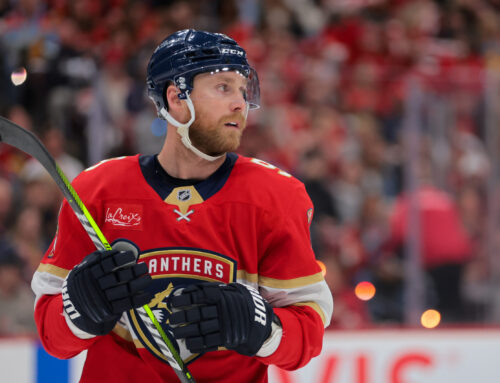
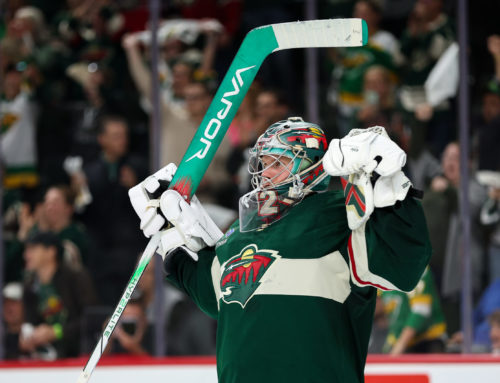
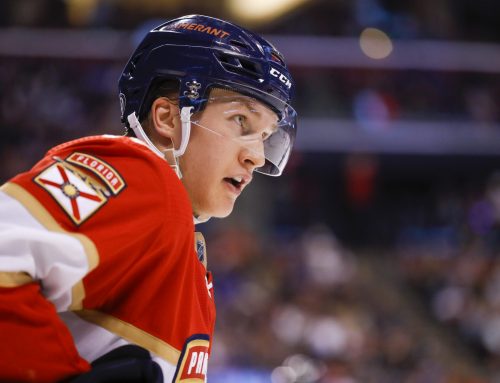
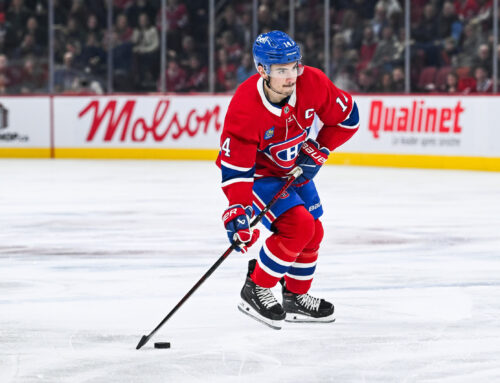
 MTL
MTL
 PIT
PIT FLA
FLA S.J
S.J MIN
MIN CGY
CGY L.A
L.A BOS
BOS